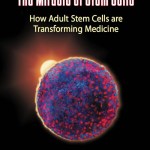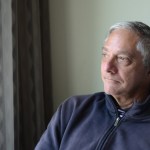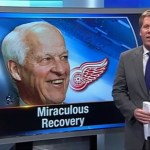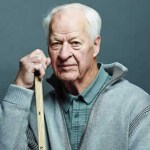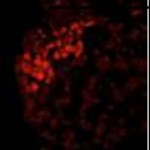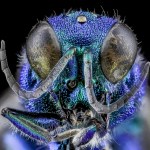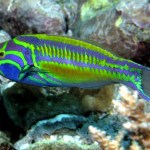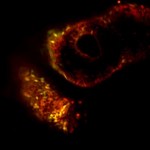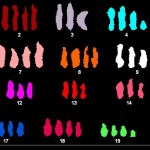stem cells
Well, it’s done.
Today, the Senate passed the 21st Century Cures Act, a bill designed to weaken the FDA and empower pharmaceutical companies, sending it to President Obama’s desk. There’s no way Obama won’t sign it, as it contains provisions funding his Precision Medicine Initiative, and he supported it all along. For all its flaws, I knew the bill’s passage was inevitable since after the election, when Senate Majority Leader Mitch McConnell stated that the bill was a priority. I knew it even more when the Senate linked the bill to the “Cancer Moonshot” initiative spearheaded by Vice…
I came across a neat article in Scientific American that described how reindeer and elk regrow their antlers every year. Could you imagine putting that much energy into growing new bone each year complete with a velvety cover containing nerves, skin, and blood vessels? Although full-grown antlers lose their blood supply and animals scrape the velvet layer off to reveal just bone.
Researchers have explored whether understanding this amazing process of annual antler regeneration could lead to new therapies to regrow nerves or organs in humans. The nerve fibers that…
I first became more interested in dubious stem cell clinics nearly two years ago, when I learned that hockey legend Gordie Howe was undergoing stem cell therapy in Mexico to treat his stroke. Being from Detroit, I imbibed the hockey madness of this town growing up, and know that Detroiters hold Gordie Howe in incredibly high esteem. Prominent in stories about Howe were two companies: Stemedica Cell Technologies, a San Diego company marketing stem cell treatments for all manner of ailments, and Novastem a partner company in Mexico that uses Stemedica products. Also prominent in the stories was…
Stem cells are magic. Stem cells cure everything. They are the next big thing in medicine.
That's the narrative one frequently hears about stem cells in the press and courtesy of offshore stem cell clinics in places such as Italy and direct-to-consumer marketing of stem cells in the US. Of course, stem cells aren't mystical and magical, although they are very promising as a treatment for some degenerative conditions. As promising as they are, though, they don't cure everything. In fact, we don't even know for sure that they cure anything because for the vast majority of conditions for which…
Last week, I wrote about a man named Jim Gass, a former chief legal counsel for Sylvania, who had suffered a debilitating stroke in 2009 that left him without the use of his left arm, and weak left leg. He could still walk with a cane, but was understandably desperate to try anything to be able to walk unaided and function more normally in life. Unfortunately (at least given what ultimately happened), Mr. Gass was both driven enough, credulous enough, and wealthy enough to spend $300,000 pursuing stem cell tourism in China, Mexico, and Argentina over the course of four years. The result is…
It's been over three weeks now since hockey legend Gordie Howe died at the age of 88. Detroit, as I've pointed out elsewhere, is a serious hockey town, as hockey-crazy as any town in Canada (just look at the fancy new hockey arena being built downtown only a mile from where I work), and it worshiped Gordie Howe for as long as I can remember growing up here.
The reason I mentioned this is because in late 2014, Howe suffered a series of debilitating strokes that brought him close to death. He survived, but with major neurologic deficits. As a result of Gordie Howe's fame, representatives of a…
Yesterday was a very strange day, at least on the Internet.
I really should learn to remove Twitter from my iPhone on Wednesdays. Why? Wednesdays tend to be my administrative days. I'm not in clinic seeing patients nor am I in the operating room. That's why Wednesday tends to be one of the two days a week when I write grants, do administrative work, and meet with my lab people, among other miscellaneous tasks, such as working on upcoming presentations. So I tend to spend most of the day on Wednesdays sitting in front of my computer, and I'm easily distracted by Twitter or other things…
And now for something completely different... (Yes, there's been enough vaccine blogging for the moment.)
The date of the Kinsman Sports Celebrity Dinner in Saskatoon is fast approaching on February 6. It reminded me of my discussion of how Gordie Howe was flown to Tijuana to undertake a dubious stem cell therapy for his serious stroke that involved the intravenous and intrathecal (into the cerebrospinal fluid) injection of "stem cells," a treatment that was followed by glowing reports from the family and credulous reporters in the press describing Howe's "miraculous" recovery from his…
Seven years ago I returned to Michigan, where I was born and spent the first quarter century of my life, after an absence of more than 20 years. In the interim, I had done my surgical residency and earned my PhD in Cleveland, a surgical oncology fellowship in Chicago, and worked in New Jersey at my first academic job for eight and a half years. Then I was lured back with a job in Detroit. One of the odd things about this return after such a long absence was the culture shock, how much I had forgotten about the Detroit area. One of those things that I had forgotten is just how crazy about…
Getting cells to revert to a stem-like state – creating so-called induced pluripotent stem (iPS) cells – was a true revolution, but the technique invented in 2006 is only half the game. The first challenges include getting enough adult cells to undergo the “reprogramming” in culture to be of use and removing those traces of “priming” that distinguish them from true embryonic stem cells. The second is keeping them in the iPS state – that is, holding back their urge to differentiate – in lab conditions. And then there is the challenge of directing their differentiation in the way that you want…
Being a cancer surgeon, I realize that my tendency is to view my blogging material through the prism of cancer, particularly breast cancer, my specialty. it's easy to forget that there are diseases every bit as horrible, some arguably even more so than the worst cancer. When I think of such diseases, it's not surprising that amyotropic lateral sclerosis (ALS), commonly known as Lou Gehrig's disease after its most famous victim. It's a progressive degenerative neurologic disease that affects the motor neurons, resulting in progressive muscle weakness throughout the body. Eventually, victims…
Perovskite solar cells can not only emit light, they can also emit up to 70% of absorbed sunlight as lasers.
Critical signaling molecules can be used to convert stem cells to neural progenitor cells, increasing the yield of healthy motor neurons and decreasing the time required to grow them.
Mexican blind cavefish are so close to their sighted kin that they are considered the same species, but they use pressure waves (from opening and closing their mouths) to navigate in the dark.
Electrostatic assembly allows luminescent elements (like Europium) to be embedded in nanodiamonds; these glowing…
For the first time, researchers have transformed induced pluripotent stem cells (iPSCs) into specialized bladder cells. Meanwhile the development of iPSCs from normal cells has been shown to depend on two proteins necessary for the induction of a glycolytic state. In order to make iPSCs, researchers have previously needed to collect significant amounts of skin, bone marrow, or blood from a donor, but researchers have demonstrated a new method that requires only a single drop of blood. In the future, you may be able to prick your finger, send a drop of blood to the lab, and have them…
Solar cells made with bismuth vanadate achieve a surface area of 32 square meters per gram. This compound can be paired with cheap oxides to split water molecules (and make hydrogen) with record efficiency.
Short-term geoengineering could postpone global warming, only to have it happen more quickly in the future.
Carotenoids tinge blackbird bills a deep orange, signalling fitness; birds with oranger bills are "are heavier and larger, have less blood parasites and pair with females in better condition than males with yellow bills."
Fibroblasts can extrude a tidy biological…
Researchers observed tiny voids forming in silicon used for solar panels; these voids provide physical evidence of the Staebler-Wronski effect, "which reduces the solar cell efficiency by up to 15 percent within the first 1000 hours."
Using an online avatar with a skin color other than your own makes you less racist in real life; playing a hero makes you less cruel, and playing a villain less benevolent.
Old mouse muscles exhibit "elevated levels of activity in a biological cascade called the p38 MAP kinase pathway" which prevents stem cells from dividing and repairing muscle damage. By…
In the future, stem cells created from our own skin cells will be used to renew damaged organs or grow new ones. We know this promise has often been made before, but the latest research in the lab of Dr. Jacob (Yaqub) Hanna is producing some solid findings that may make you believe in the possibility.
Just a little over a month ago, we reported that Hanna and his group had discovered a “brake” that keeps our cells from easily reverting to an embryonic-stem-cell-like state (induced pluripotent stem cells, or iPS cells). Removing that brake enabled them to ramp up the conversion process – in…
First, there was the great hope of induced pluripotent stem cells (iPSCs), and then there was the inevitable letdown. When the announcement came, in 2006, that simple adult skin cells could be reprogrammed – reverted back to an embryonic stem cell state by the addition of just four genes – it seemed like an almost magical solution to the problems of using stem cells from embryos. But then some studies started to find that the reprogramming process was not perfect – iPSCs were similar, but not identical, to the cells from early embryos. More critically, only about 1% of the cells treated with…
... which would be really funny because ... well, you clearly see why this is funny.
Christian groups and sects are often opposed to the use of biological tissue that would otherwise be discarded in research and therapy including "stem cell research." This is because they think some of that biological tissue could be future parishioners, or because they watched too many Disney movies involving fairies. Or something. Anyway, there is this one kind of stem cell that exists among regular cells that can be extracted from the body of a living, breathing already signed up parishioners and the…
Stem cells are magical, mystical things that can't be explained.
At least, if you listen to what docs and "practitioners" who run stem cell clinics in various parts of the world, usually where regulation is lax and money from First World clientele is much sought after, that's what you could easily come to believe. Unfortunately, it's not just Third World countries in which "stem cell clinics" have proliferated. For instance, they are not nearly uncommon enough in Europe. The example that is most troubling right now is Italy, and the reason is that there is currently a law being considered…
Another advance in cancer research is featured on our website this week. Among other things, this one highlights the dangers of assuming causation from correlation. Prof. Dov Zipori and his team were looking at adult stem cells in the bone marrow. These hold a lot of potential for treating many kinds of disease but, like many kinds of stem cells, there is a risk of these cells differentiating into cancer instead of the intended normal tissue replacement. The idea was to find a marker that could tell which cells were more likely to turn cancerous, thus making the use of these stem cells safer…
